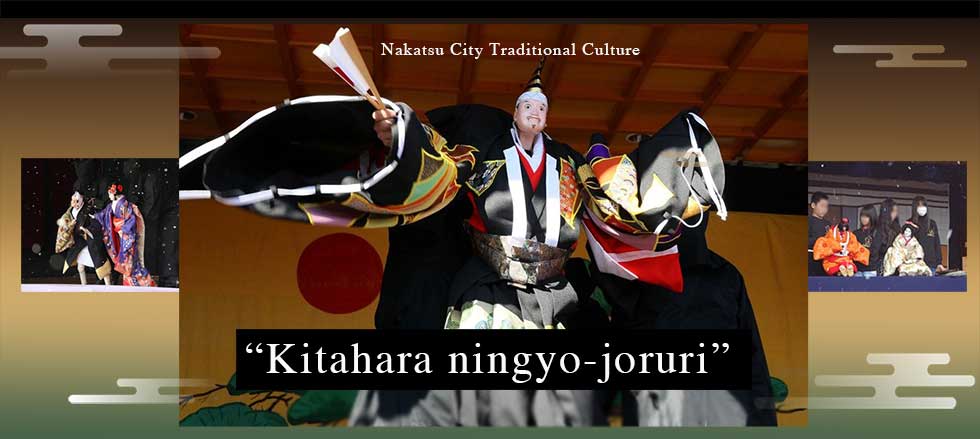Season Calendar
-歳時記-
北原人形芝居
(Kitahra puppet Show-Joruri-)

The Chronicle introduced this time is,
Kitabaru Puppet Show,"
a prefectural intangible folk cultural property.
The puppet show, which boasts a history of more than 700 years since the Kamakura period (1185-1333), has been handed down in Nakatsu City, Oita Prefecture.
The Kitahara puppet show is said to have originated when Hojo Tokiyori,
regent of the Kamakura Shogunate,
fell ill in Nakatsu while making a tour of the country and recovered thanks to the devoted nursing of the villagers.
Later, in the Edo period (1603-1867), joruri was adopted.
In 1969, a puppet theater club was established at a municipal elementary school in an effort to learn the traditional performing arts of the community.
In addition to adults, the puppet theater club of the local municipal elementary school practices joruri (puppet play) for dedication at the Mannengan (Mannen) ceremony at Harada Shrine in the Kitahara district.
It is said that it is rare in Japan for an elementary school to have a puppet theater club.
Mannen-gan, which is on the first Sunday of February every year,
will be performed.
The children will perform Act 2, "Keisei Awa no Naruto: Pilgrimage Song Dan.
It is a sad story about the separation of a parent and child. The three puppets are the mother, "Oyumi," the daughter, "Otsuru," and the flying boat.
Each doll weighs about 4 kilograms and is manipulated by three people to accompany the joruri narration.
If you are interested, please visit kitahara puppet theater.
About Ningyo Joruri
Ningyo joruri bunraku is one of Japan's representative traditional performing arts,
a comprehensive art form that combines tayu, shamisen, and puppets.
Its origins date back to the early Edo period (1603-1868),
when it was first called ayatsuri ningyo (puppet theater) and later ningyo joruri (puppet drama).
Ningyo joruri gained great popularity thanks to the gidayu performances of Takemoto Gidayu and the works of Chikamatsu Monzaemon,
and reached its zenith with the founding of the Takemoto-za theater.
The Toyotake-za and several other ningyo joruri troupes rose and fell,
and at the end of the Edo period the most influential and central one was started in Osaka by Uemura Bunrakuken of Awaji, and "bunraku" eventually became synonymous with ningyo joruri.
(quoted from Bunraku Association)
The History of Bunraku(joruri)
NINOJI(にのじ) and IHOUSAISAI(衣縫歳彩) will also produce costumes for joruri,
Please feel free to contact us.

